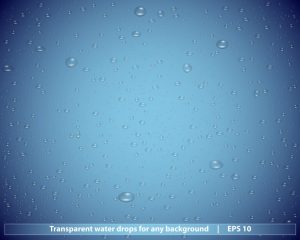
We tend to focus on temperature control for our homes here in Fredricksburg, TX, and for good reason: heaters are as vital in the winter as air conditioners in the summer. But that’s not the only aspect of home comfort you need to pay attention to. Humidity levels here in Texas — both high and low — can be brutal, and while you should be rightly focused on your HVAC system for keeping your home comfortable, you can take steps to address ambient moisture levels as well. Luckily, there’s a great way to go about it, with help from a lot HVAC service technician.
Why Are Humidity Levels a Problem?
Humidity levels need to maintain a certain balance in order to be comfortable. We measure ambient moisture levels in the air as a percentage, called relative humidity. 100% humidity means rain. 0% humidity (which almost never happens on planet Earth) means no moisture in the air at all. We’re usually comfortable when relative humidity levels sit between 30% and 50%.
The problem is that in our neck of the woods, humidity levels are often higher than that in the summer and lower than that in the winter. With dry air, your skin becomes cracked and itchy, your sinuses dry out (leaving you more vulnerable to colds), and static electricity becomes a regular occurrence. Your heater suffers as well, since dry air feels cooler than moist air, and you need your HVAC system to work harder to make up the difference.
Then in the summer, the situation flips. Suddenly, you have more moisture in the air than you need, and the problems become much different. When there’s too much ambient moisture in the air, your sweat won’t evaporate off of your skin. That’s your body’s primary means of keeping cool, so the air feels hotter than it is by default, Not only does that create a clammy gross feeling on your skin, but the air conditioner has to work just as hard as the heater does with dry air in order to help you feel cool again. Monthly bills go up along with the chances of a breakdown, and mold and bacteria have a welcome environment to flourish in your home.
A Double Solution
Sadly, there’s nothing we can do about the rise and fall of humidity levels here. But a whole-house humidifier and dehumidifier, both installed in your HVAC system, can make a huge difference. The dehumidifier isn’t much different from your air conditioner, save that it’s designed specifically for removing moisture from the air and is far more effective at the job than an AC (which is set up to specifically address temperature control). Humidifiers consist of a wick or pad connected to a reservoir, over which a fan blows to add moisture to the air. With both of them in place, your home can balance out relative humidity levels, remove stress from your heating and air conditioning system, and keep you and your family comfortable no matter how dry or muggy it is outside.
Call the pros at D’Spain Sales and Service, Inc. today!





















